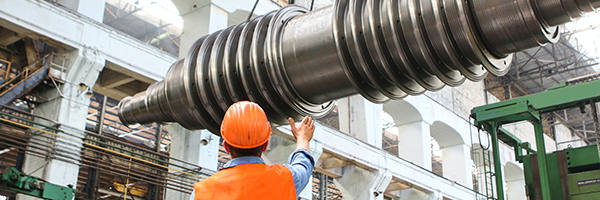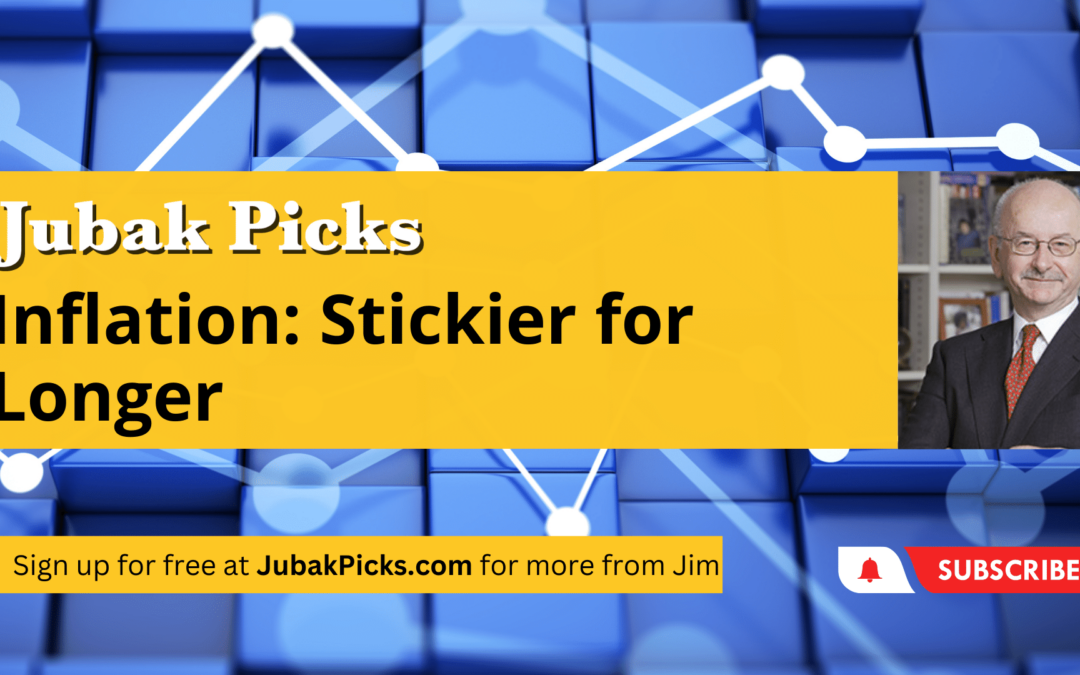
March 12, 2024 | Morning Briefing, Short Term |
Core CPI inflation came in hotter than expected in February for a second straight month. The core Consumer Price Index, which excludes food and energy prices, increased 0.4% from January, the Bureau of Labor Statistics reported today. The year over year inflation rate rose to 3.8%. Economists had been projecting 3.7% annual rate. Core CPI over the past three months rose an annualized 4.2%, the highest annual rate since June. That adds to worries that the improvement in inflation has stalled in recent months.

March 10, 2024 | Daily JAM, Morning Briefing |
A month after the stock market was rocked by a worse-than-expected inflation report, investors are fearing a reprise when the latest data arrives on Tuesday. Last Thursday stocks rallied when Fed Chair Jerome Powell said in his testimony before the Senate that the central bank is “not far” from being ready to cut interest rates. But this week Fed officials are in their regular blackout period ahead of their meeting on March 19 and 20. Absent Fed commentary on the inflation report, stocks may be volatile again.

February 29, 2024 | Daily JAM, Mid Term, Morning Briefing |
The headline, all-items Personal Consumption Expenditures price index, the Federal Reserve’s preferred inflation measure, climbed at a 2.4% year over year rate in January. That was in line with what economists had forecast and down from the 2.6% annual rate in December. The core PCE, that is after stripping out more volatile food and fuel prices, climbed at a 2.8% year over year rate. In December the annual rate of core inflation had been 2.9%. But that was the end of the good news in today’s PCE inflation report.

February 26, 2024 | Daily JAM, Morning Briefing, Short Term |
On Thursday the financial markets get a new monthly PCE inflation report. The PCE, Personal Consumption Expenditures index, is the Federal Reserve’s favorite inflation measure. And Thursday’s report on January inflation could be bad news for the financial markets,

February 16, 2024 | Daily JAM, Morning Briefing, Short Term |
The Labor Department reported Friday that its producer price index—which tracks inflation before it reaches consumers—rose 0.3% from December to January. The index had dropped -0.1% in December. Measured year over year, producer prices rose by 0.9% in January. But the month to month increase in producer prices and at a higher month to month rate is the latest sign that getting inflation the “last mile” down to the Federal Reserve’s 2% target rate is going to be harder and take longer than expected.

February 15, 2024 | Daily JAM, Morning Briefing, Short Term |
Remember all that fear talk after CPI headline inflation came in at a 3.1% annual rate in January versus the projected 2.9%? Well, that lasted all of a day.

February 15, 2024 | Daily JAM, Mid Term, Videos |
Today’s video is Inflation: Stickier for Longer. The market is now beginning to suspect that the Fed has a last mile problem. The CPI numbers from Tuesday weren’t terrible, but they weren’t as low as the market hoped. Headline inflation was at 3.1% annual rate and core inflation was 3.9%–markedly better than the past high of 9%, but not quite hitting the 2.9% for headline inflation that economists were looking for. The miss has finished a flip in sentiment about a March rate cut. The CME FedWatch poll in January had March rate cut odds at 90% likely, now, just a month later, the odds of no action are up to nearly 90%. Only about a third of investors believe there will be a rate cut in May with odds of no action up to 61%. The calendar is being pushed out to June or July for cuts from the Fed. This has resulted in bond yields going back up, around 4.3% on the ten year Treasury, and stocks going down a bit. There is a hope out there that the CPI numbers were a January blip, but if you look at the breakdown of the inflation numbers, it seems clear that inflation is just plain sticky. The Atlanta Federal Reserve Bank index that looks at the sectors that tend to be sticky and how much they’re influencing the overall inflation rate shows that prices in those sticky inflation categories have stopped and that they are a major factor keeping inflation higher than hoped. . Additionally, while there’s been a big drop in goods prices, the price of services has not gone down nearly as much. The super core inflicts number, which looks a prices in the services sector after taking out the cost of shelter has stalled. All this to say, we’ve got good evidence that this last mile from 3% to 2% on inflation could take a while.

February 13, 2024 | Daily JAM, Morning Briefing, Short Term |
Headline, all-items Consumer Price Index (CPI) inflation fell again in January, but not by as much as economists had projected before this morning’s report from the Bureau of Labor Statistics. In January prices rose at 3.1% year-over-year. That’s a slower increase than the 3.4% annual rate notched in December. But economist had projected that inflation would dip to a 2.9% annual rate. And stocks dropped on the disappointment.

February 11, 2024 | Daily JAM, Morning Briefing |
I expect another downward move for inflation when the January Consumer Price Index (CPI) is reported on Tuesday. Economists surveyed by Bloomberg expect that the core consumer price index, which excludes move volatile food and fuel prices, will show a year over year rate of increase of 3.7% in January. That would be the slowest year-over-year increase since April 2021.

February 1, 2024 | Daily JAM, Morning Briefing, Short Term |
A day before the January jobs report that everyone on Wall Street is awaiting with bated breath two other reports painted a conflicting picture of how the U.S. economy is doing. And just in case you’ve forgotten the strength and speed of economic growth is what will determine when the Federal Reserve first cuts interest rates and how many cuts investors will see in 2024.

January 25, 2024 | Daily JAM, Morning Briefing, Short Term |
U.S. Gross Domestic Product (GDP) grew at an annual 3.3% rate in the fourth quarter, the Commerce Department announced today. That was down from the 4.9% annual growth rate in the third quarter, but substantially above the 2.0% rate expected by economists. For the full year, the US.economy expend at a 3.1% rate.

January 11, 2024 | Daily JAM, Short Term |
Federal Reserve officials were out with one message today: The slightly higher-than-expected CPI inflation number for December/the slightly-slower-than-expected slowdown in CPI inflation argues that there’s still more work to be done on bringing inflation down to the Fed’s 2% target. And that talk of a rate cut in March is premature.









